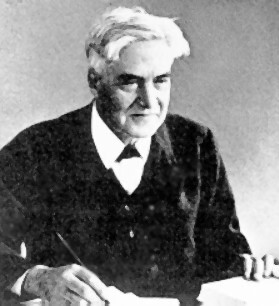It’s fascinating to realize how recent our knowledge of the nearest stars has emerged. A little less than a century has gone by since Proxima Centauri was discovered by one Robert Thorburn Ayton Innes (1861-1933), a Scot who had moved to Australia and went on to work at the Union Observatory in Johannesburg. Innes used a blink comparator to examine a photographic plate showing an area of 60 square degrees around Alpha Centauri, comparing a 1910 plate with one taken in 1915. Forty hours of painstaking study revealed a star with a proper motion similar to Alpha Centauri (4.87″ per year), and about two degrees away from it.

The question Innes faced was whether the new star was actually closer than Alpha Centauri, an issue that could be resolved only with better equipment. Ian Glass (South African Astronomical Observatory) tells the tale in a short paper written for the publication African Skies. Innes ordered a micrometer eyepiece that would be fitted to the observatory’s 9-inch telescope, an addition that was completed by May of 1916. In April of the following year he realized he was in a competition. A Dutch observer working at the Royal Observatory in Cape Town wrote to Innes to say that he had begun parallax studies on the new star in February of 1916.
Image: Robert Thorburn Ayton Innes, discoverer of Proxima Centauri. Credit: Wikimedia Commons.
Proxima did not yet have its name, of course, though there was suspicion that it was bound to Alpha Centauri and thus might be Centauri C (it’s worth noting that the question isn’t fully resolved even today, though the case for a bound Proxima seems strong). The Dutch observer, who bore the majestic name of Joan George Erardus Gijsbertus Voûte, published his results before Innes could get into print. There was not enough evidence to prove that the new star was closer than Alpha Centauri, but Voûte pointed out that its implied absolute magnitude made it the least luminous star then known. The soon to be christened Proxima was hardly a headliner.
According to Glass, Innes was concerned to establish his priority in the discovery — some things never change — and so he rushed his incomplete parallax results into a 1917 meeting of the South African Association for the Advancement of Science. Relying partly on Voûte’s data, Innes wound up with a parallax value of 0.759″. Says Glass: “…without a proper discussion of the probable error of the measurement, [Innes] drew the unjustifiable conclusion that his star was closer than α Cen and therefore must be the nearest star to the Solar System.”
Thus, based on as yet incomplete evidence, the new star was named, with Innes suggesting ‘Proxima Centaurus.’ It turns out that the preliminary value Voûte calculated for Proxima’s parallax in his paper was closer to the correct one than Innes’, but the latter would always be known for the discovery of Proxima. We didn’t really peg the accurate value of Proxima’s proper motion until H. A. Alden did so at Yale Southern Station in Johannesburg in 1928. Innes, as it turned out, had made a lucky guess forced by circumstance, one that proved to be correct.
Voûte (1879-1953) turned out to be an interesting figure in his own right. Having decided at an early age to make astronomy his life’s work, he developed a keen interest in double stars and parallaxes and published on the subject over a span of some fifty years. Born to Dutch parents in Java, he returned there to found the Nederlandsch-Indische Sterrekundige Vereeniging, whose express object was to set up an astronomical observatory. Voûte would use the observatory at Lembang, 1300 meters up on the side of the Tangkoebanl Prahoe volcano, to make numerous parallax determinations and photographic studies of variable stars, concentrating particularly on closely paired double stars. You can see where he got his interest in Alpha Centauri!

Image: From left to right: J.G.E.G. Voûte (the first director of Bosscha Observatory), K.A.R. Bosscha (the principal benefactor and chairman of the NISV), Ina Voûte (Voûte’s wife). Source: Private collection of Bambang Hidayat. Credit: Tri Laksmana Astraatmadja.
World War II destroyed Voûte’s health — he was imprisoned during the Japanese occupation of Java, and never fully recovered — but he remained interested in astronomy until his death. As to Innes (whom Glass mistakenly refers to as ‘Richard’ rather than ‘Robert’), his work on binary stars would lead to 1628 discoveries and the publication of the Southern Double Star Catalog in 1927. Innes was a self-taught amateur astronomer, a wine merchant in Sydney with a passion for the sky who, despite his lack of formal training, showed enough promise to be invited to the Cape Observatory by the astronomer royal Sir David Gill, moving on to Johannesburg in 1903. It seems appropriate that a small M-dwarf in Carina with a high proper motion — GJ 3618 — is today known as Innes’ Star after its discoverer.
For more, see Glass, “The Discovery of the Nearest Star,” African Skies Vol. 11 (2007), p. 39 (abstract).



Molto interessante, questo excursus” storico…
Saluti da Antonio
Via Google Translate:
Very interesting, this historic digression…
Nice article, I’m very happy you mention the works of Voûte and put his picture here. I would like to add that according to Pyenson (1989), during the war Voûte was later released from internment and was allowed to carry out observations of double stars, during which he managed to observe 11.000 pairs. A portion of this would later be published in the Journal des Observateurs.
He’s also the first to notice that Beta Centauri is a double star.